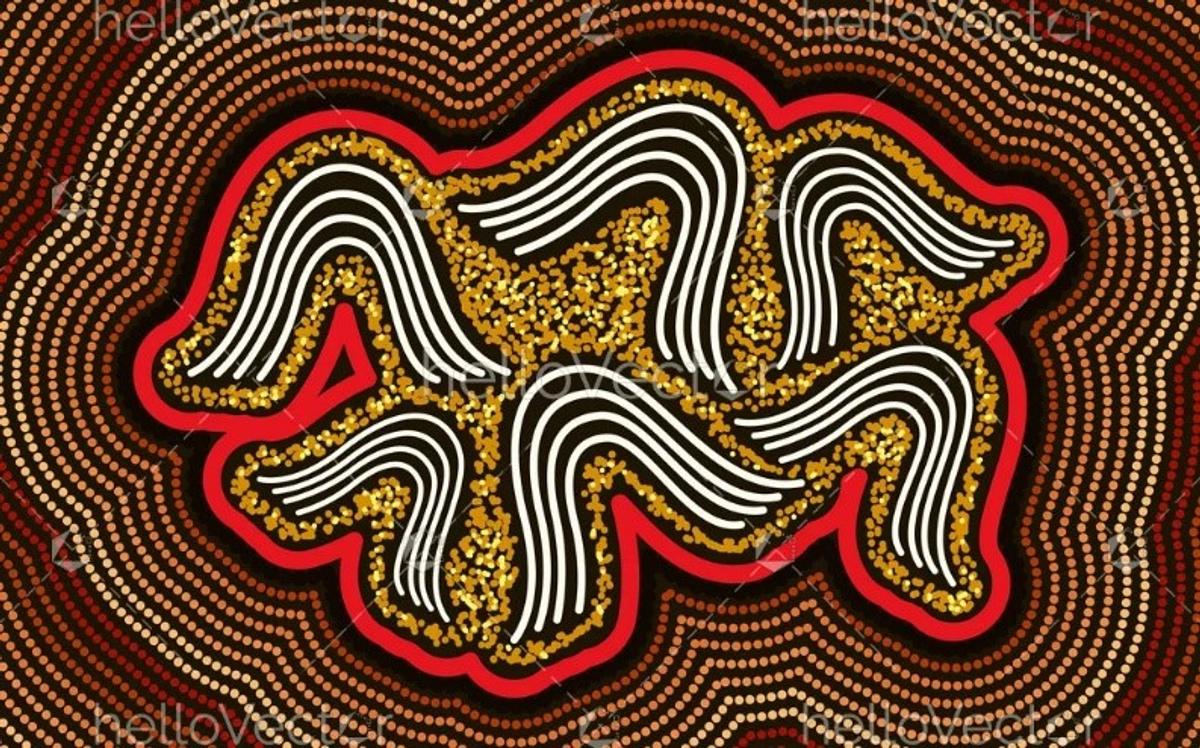Aboriginal Art Viewing Task Part
Creating Futures Together

Aboriginal Art Viewing Task Part
Creating Futures Together
As part of the Aboriginal Cross-Curriculum, students in Year 7 RISE English learned the literary devices of symbols and symbolism. To apply their understanding, they were instructed to examine the symbols in the Aboriginal Art of their choice and write a piece to explore the significance of art work. Here are some student artworks:


This Aboriginal dot painting is of mountains. All of these symbols have very special, deep meanings to them. The lines that go in a wave symbolises mountains, aboriginal's say it’s an ongoing life force that strengthens the link between the ancestors. The yellow represents the sun the re-newer of life. The red represents the earth and the ochre which has a significate meaning. The brown also represents the earth and the black symbolises the aboriginal people. Aboriginal dot painting is very useful in the aboriginal culture. This art piece could be saying how they had to cross a mountain or how big and beautiful the mountains are.
This art piece could be about the importance of the land, or a spiritual journey. It could also be about the power of nature, and the way the aboriginal people have connected with it. This is because the land and the people are naturally linked, and the land provides the aboriginal people with sustenance and spiritual guidance. Aboriginal art is an expression of their connection to the land and their understanding of its power. It is also a way for them to communicate, tell stories, values and history, and to connect with each other. For example, some aboriginal artworks depict the Dreamtime stories, which are stories that describe the creation of the land and the people by the ancestral spirits. (Emonefe)
>>>>>>>>>>>>>>>>>>>
My interpretation of this aboriginal art piece is that the symbols and colours represent the sun behind the clouds, shining down on a variety of flowers. It appears to be a painting of a flower garden.
I believe the colours and symbols represented in this artwork depicts a flower garden, or a hill of flowers. I also believe this hill of flowers is being rained on by sunshine. The sun in this artwork is raining on the flowers, but is hidden behind an array of clouds, most likely trying to block up the sun. Personally, I believe this artwork has been painted or taken by a person who was laying in a flower field. I also think it was a sunset or sunrise with how majestic this artwork really is. This artwork was definitely made for the purpose of beauty and symbolism. This artwork truly gives me memories of running around in flower fields as a child while watching the sun set. I can see that the flowers come in all shapes, sizes and colours in aboriginal art. This artwork also shows that the yellow flowers are being rained on by sunshine the most out of all of them. This artwork really does bring beauty to me as all symbols in this image have meaning behind them. (Connor)
>>>>>>>>>>>>>>>>>>>>>
This art piece is describing a beautiful and vast mountain range. I guess it was made in the dessert because of the reds, yellows, oranges, whites and browns.
It seems like the mountain range is spread out and different which symbolises how people can be different and spread out, but still find similarities within each other. The dots look like the sand dunes commonly found in the outback of Australia, and they symbolise that even though we and our world change, new areas are made.
The colours are very reminiscent to the ochres and sands that can be found in the Australian outback, and makes me think it is set in the outback and was made there. The dots around the mountain range could symbolise how the mountains provide shelter and home to animals.
Since the dots are in a very different colour it may symbolise how the mountains stand out from the rest of the outback with their height. The red border may mean a river that runs around the mountain range, although it does not use the symbol commonly used to symbolise a river.
In conclusion, the image can mean many things, but mainly talks of a mountain range. (Ben)